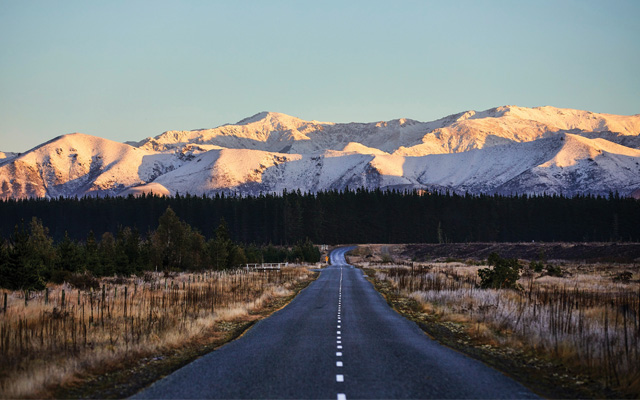New Zealand is on a mission to educate visitors on how to bring about a positive impact on their travels through the country, so as to ensure a better future for its tourism industry
Regenerative tourism is the direction which New Zealand has taken coming out of the pandemic, where the country’s goal is to go beyond sustainable travel, and help visitors leave it in a much better place than when they first arrived.
Before the pandemic, New Zealand was at risk from overtourism, where in 2019, the country of five million was hosting 11 million visitors a year from 2016 to 2019, shared Cameron Hayes, marketing manager sustainability, Tourism New Zealand. While this meant that the tourism sector was thriving and there were many economic and social benefits, this enormous number was putting a strain on the environment and its people.

This led to the creation of Tiaki – Care for New Zealand, as New Zealand sought to build back better after the pandemic. Tiaki, a Mãori word that loosely translates to care, conserve, and protect, is made up of five behavioural pillars (Protect Nature, Keep NZ Clean, Be Prepared, Drive Carefully, and Show Respect) that inspire visitors to travel safely and conscientiously.
Acknowledging the Tiaki promise is one thing; visitors are also encouraged to walk the talk, such as by giving wildlife space, not using a drone, keeping camping areas clean, not drinking and driving, paying attention to speed limits, not littering, and respecting Mãori sites.
Local tourism operators are making it easy for travellers to do the right thing.
Dale Burrows, director, Franz Josef Wilderness Tours, told TTG Asia: “One of our efforts includes a push for predator-free New Zealand, to give the kiwis (birds) a chance. We have partnered with Zero Invasive Predators and Predator Free South Westland initiative by assisting with transport to areas along the Lake Mapourika and Kiwi Sanctuary shoreline.
“We also assist with responses they have had through their network of AI Camera and monitoring systems in the surrounding rainforest.”

One of the company’s achievements was working with the Department of Conservation on the Operation Nest Egg programme to bring back the rare Rowi Kiwi back from the brink of extinction into a stable pocket of 500 birds; and in the last year or so, Franz Josef Wilderness Tours has also achieved carbon zero.
Guests on their tours within the Westland Tai Poutini National Park will also be able to check traps, and learn about conservation efforts firsthand.
Burrows added: “Education is a very important part of Tiaki. We teach guests about the flora and fauna of New Zealand, and sustainable practices like leaving only footprints.”
Similarly, Darren Gamble, tourism manager of Mount White Station in Arthur’s Pass, is offering longer, immersive stays that show tourists how close the locals’ relationship with the land is.
Gamble elaborated: “Visitors get to learn about beekeeping through the three-hour pollen-to-plate experience. They go out with the beekeepers to harvest the honey, then to the extraction, before trying some honey paired with wines. We also can take guests to see the sheep, shepherds, and 15 dogs they work with. There’s also a deer paddock on-site.”
By revelling in these experiences, Gamble pointed out travellers will be able to learn about what farmers struggle with, and show them how much effort goes into shearing a sheep to produce enough wool to make a sweater, as well as reconnect with nature to boost mental health.
Further up on the North Island, Sam Sutton, director, Rotorua Rafting and Rotorua Ziplines, is on a mission to plant 100,000 native trees, which will in turn rid 90 per cent of gorse (a yellow-flowering shrub that is a major invasive plant species in New Zealand).
He told TTG Asia: “We have a whole pest control network set up, and it’s easy for clients to participate in. These include planting a tree, or supporting a programme that deals with predators. New Zealand has the fastest rate of extinction of our indigenous species more so than any other country (due to invasive flora and fauna introduced by early settlers).”
During the company’s rafting tours, guides take time to point out the different flora and fauna and explain their purposes. They also explain why rats and possums are killed – because these introduced animals are destroying New Zealand’s ecosystem. Possums consume 20,000 tonnes of foliage each night, while 68,000 native birds are eaten by introduced predators every night.
Sutton opined: “Honestly, I don’t think there’s another industry that’s got more focus and buy-in from the operators in all aspects. In New Zealand, regenerative tourism is at the core essence of what everybody does.”

Rene de Monchy, chief executive, Tourism New Zealand, stated: “Our vision by 2030 is that we want all visitors to New Zealand to be of high quality, which will lead to a more productive and regenerative New Zealand.”
He noted that “high-quality visitors” go beyond “high net worth visitors”, and includes travellers who are engaged with New Zealand’s culture and nature, and undertake a range of experiences at different times of the year.
“Visitors to New Zealand who’ve been influenced by our work either on a consumer or trade level will spend more, visit more regions, and come in the off-peak seasons, and have higher efficacy for New Zealand after they leave.
“These visitors will enrich the wellbeing of New Zealand, help to create jobs, restore nature, and enhance our heritage building. That is very important to us,” said de Monchy.




















